Mad Hedge Technology Letter
September 11, 2023
Fiat Lux
Featured Trade:
(DEATH OF LEGACY MEDIA)
(CHTR), (DIS), (NFLX), (NXST), (DISH)

Mad Hedge Technology Letter
September 11, 2023
Fiat Lux
Featured Trade:
(DEATH OF LEGACY MEDIA)
(CHTR), (DIS), (NFLX), (NXST), (DISH)

Negotiations between Spectrum’s parent company, Charter Communications (CHTR), and Walt Disney (DIS) finally got over the impasse and they struck a deal.
No deal for both would have been catastrophic for both.
Disney faced the potential loss of 14.7 million Charter pay TV subscribers, or 20% of ESPN's current linear subscriber base of 74 million.
That equates to linear revenue losses of roughly $5 billion, or 6% of overall revenue.
Cord-cutting has been occurring at a brisk pace in the last few years, but the lack of solidarity among the legacy media negotiators appears to turn the trickle into a breaking of the dam.
What am I talking about?
Disney decided to go nuclear by removing its channels from the cable provider. Charter (CHTR) proposed that Disney (DIS) offer its customers free access to Disney’s streaming services, especially ESPN; Disney rebuffed the offer, but CHTR finally agreed to add Disney+ Basic ad-supported offering being provided to Charter customers who purchase the Spectrum TV Select package at no additional cost, "as part of a wholesale arrangement."
This is really the beginning of the end for legacy media and this melee could trigger a swift bout of consolidation as disagreements become the norm and not the outlier.
It’s no surprise the cost of creating content is going up and these channels like DIS feel they can just pass the costs
Remember that many people pay for cable just to watch college football and the NFL.
Roughly 25% of Charter’s clients engage with Disney content, Charter said on a call last week.
DirecTV is also embroiled in its own content squabble with local broadcast network Nexstar (NXST), which recently pulled over 200 stations in more than 100 metro areas from DirecTV’s network over a similar price dispute.
While the cable TV business has been declining for years, there’s concern this is the last hurrah.
Down the road, the winners out of all of this may be internet TV operators, including YouTube TV, Hulu TV, FuboTV, and Dish’s DISH’s (DISH) Sling. Some of these have been gaining steady traction even before negotiations soured, with Hulu’s web traffic up 7.2% year-over-year in July and Sling’s traffic up 11.8%.
Web traffic may pick up as consumers look for ways to watch their regularly scheduled programming. Online search interest in five major live TV streaming services picked up Sept. 1 when news of Disney’s blackout became public, according to Google Trends data.
I believe that online momentum will translate to a long-term subscriber bump for these companies.
CEO of CHTR Christopher Winfrey and CEO of DIS had to make this deal.
The ongoing chaos in the legacy media markets signals that cord-cutting will supplant the legacy markets within the next 10 years.
Baby Boomers are the last stalwarts of the legacy media market and they are retiring in droves.
Netflix (NFLX) is another streamer that is in line to pick up some of the demand for streaming content.
With high rates, the era of excesses is rearing its ugly head.
Platforms are being careful with the type of agreements they make as less quality content is facing a bleak future.
Live professional sports are lynchpin to why many consumers don’t quit cable.
I believe the next contract cycle will see many pro sports leagues go all streaming much like the American soccer league MLS did with Apple TV.
When pro sports migrate 100% into digital, expect to be outsized winners and losers while distributors like SlingTV should sink like a rock.
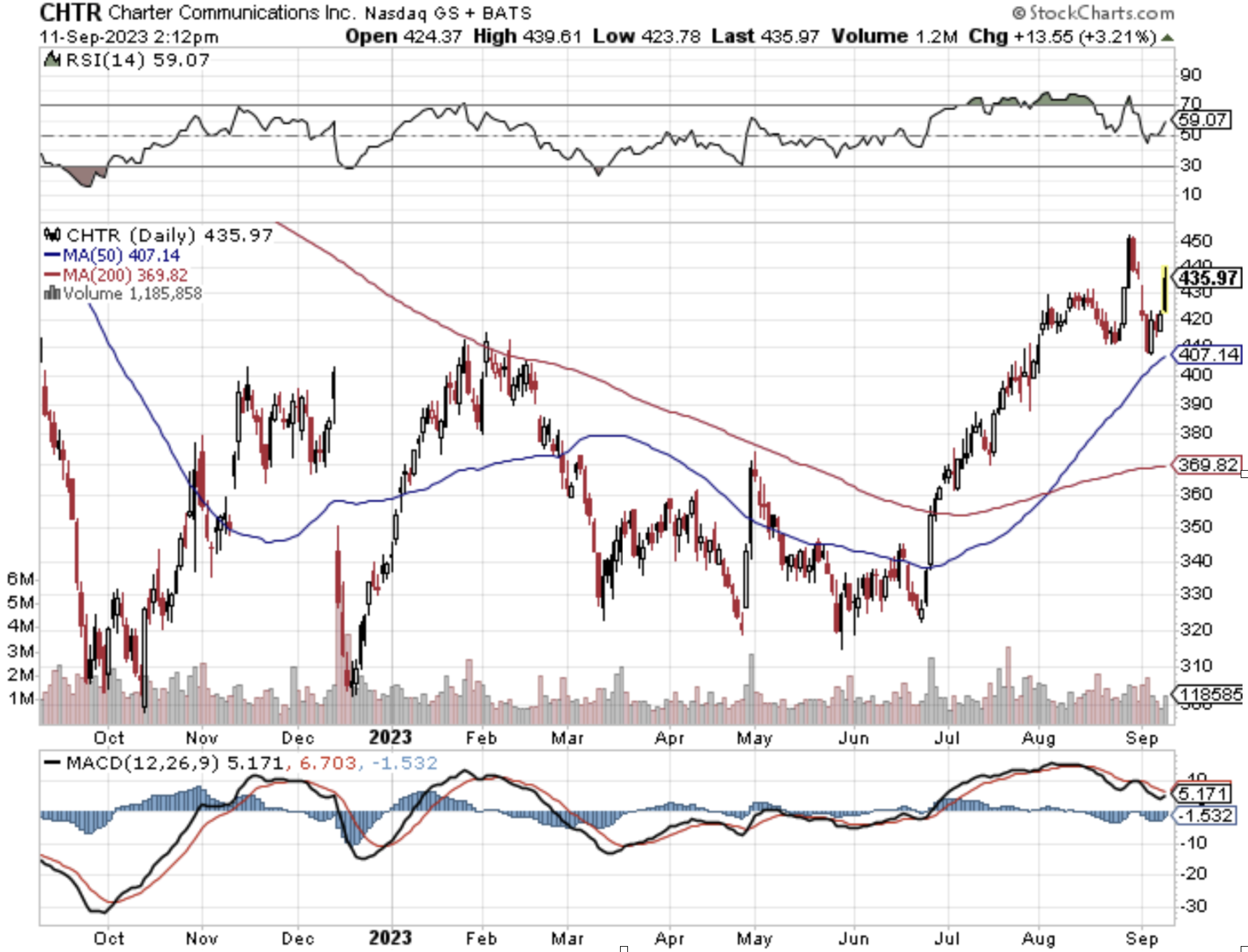
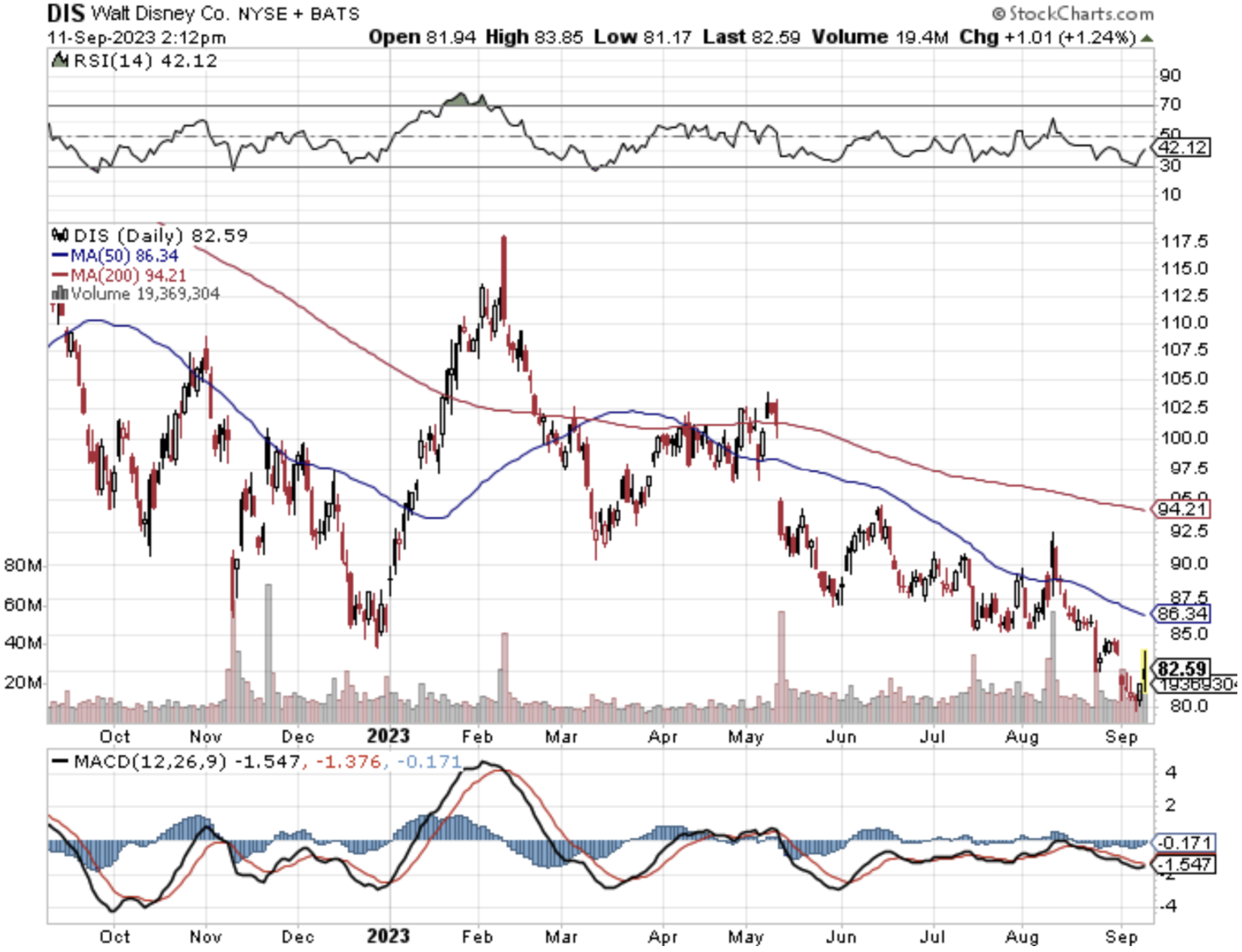
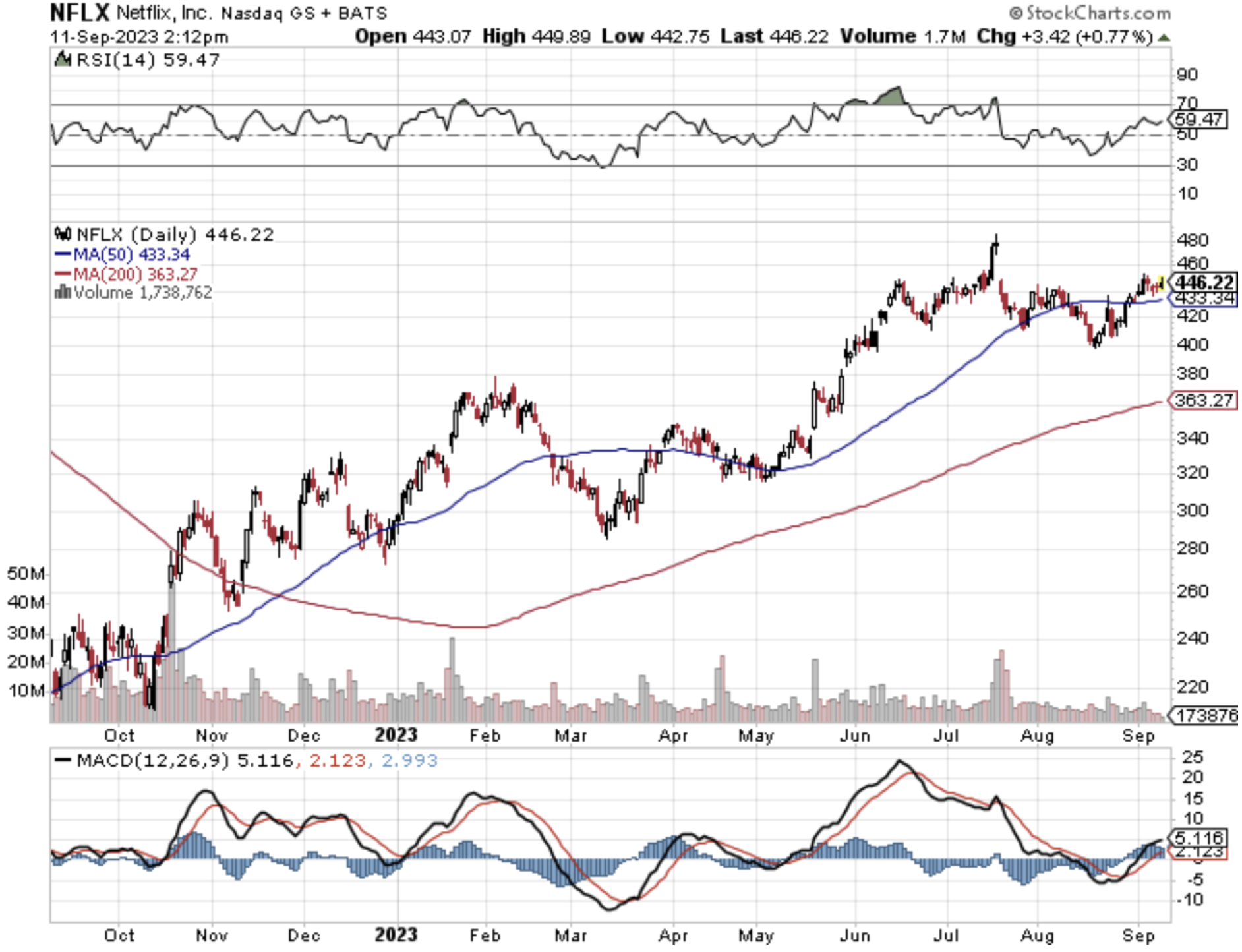
Mad Hedge Technology Letter
November 19, 2018
Fiat Lux
Featured Trade:
(ROKU’S UNASSAILABLE LEAD)
(TIVO), (ROKU), (NFLX), (AMZN), (CHTR), (DISH), (FB), (AAPL), (GOOGL)

Shake off the rust.
That is exactly what management of a fast-growing tech company doesn’t want to hear.
Losing money isn’t fun. And investors only put up with it because of the juicy growth trajectories management promises.
Without the expectations of hard-charging growth, there is no attractive story in a world where investors need stories to rally behind.
Setting the bar astronomically high in the approach to management’s execution and product development will always be, the single most important element in a tech company.
This is the secret recipe for thwarting entropy and rising above the rest.
You might be shocked to find out that most tech firms die a harrowing death, the average Joe wouldn’t know that, with constant headlines glorifying our tech dignitaries.
Just look at the pageantry on display that was Amazon’s (AMZN) quest to find a second headquarter.
According to Apex Marketing, the hoopla that coalesced around Amazon’s year-long search netted Amazon $42 million in free advertising by tracking the absorbed inventory of exposure from print, TV, and online.
Social media traffic by itself rung up $8.6 million of freebies.
These days, tech really does sell itself, and I didn’t even mention the billions in tax breaks Amazon will harvest from their Willy Wonka and the Chocolate Factory style headquarter search.
The only thing I would have changed would have been extending the contest into the second year.
Amazon’s brand is probably the most powerful in the world, and that is not because they are in the business of only selling chocolate bars.
One company that might as well sell chocolate bars and has been stymied by the throes of entropy is TiVo (TIVO).
TiVo was once the darling of the technology world.
It was way back in 1999 when TiVo premiered the digital video recorder (DVR).
It modernized how television was consumed in a blink of an eye.
Broad-based adoption and outstanding product feedback were the beginning of a long love affair with diehard users wooed by the superior functionality of TiVo that allowed customers to record full seasons of television shows, and, the cherry on top, fast-forward briskly through annoying commercials.
The technology was certainly ahead of its time and TiVo had its cake and ate it for years.
The stock price, in turn, responded kindly and TiVo was trading at over $106 in August of 2000 before the dot com crash.
That was the high-water mark and the stock has never performed the same after that.
TiVo’s cataclysmic decline can be traced back to the roots of the late 90’s when a small up and coming tech company called Netflix (NFLX) quickly pivoted from mailing DVD’s to producing proprietary online streaming content.
Arrogant and set in their old ways, TiVo failed to capture the tectonic shift from analog television viewers cutting the cord and migrating towards online streaming services.
Consumer’s viewing habits modernized, and TiVo never developed another game-changing product to counteract the death of a thousand cuts to traditional television and its TiVo box that is still ongoing as I write this.
Like a sitting duck, Charter Communications (CHTR) and Dish Network (DISH) devoured TiVo’s market share in the traditional television segment constructing DVR’s for their own cable service.
And instead of licensing their technology before their enemies could build an in-house substitute, TiVo chose to sue them after the fact, resulting in a one-time payment, but still meant that TiVo was bleeding to death.
Enter Project Griffin.
Netflix (NFLX) spent years developing Project Griffin, an over-the-top (OTT) TV box that would host its future entertainment content and poured a bucket full of capital into the software and hardware of this revolutionary product.
Making the leap of faith from the traditional DVD-by-mail distribution model that would soon be swept into the dustbin of history was an audacious bet that looks even better with each passing year.
This Netflix branded OTT box was specifically manufactured for Netflix’s Watch Instantly video service.
In 2007, Netflix was just week’s away from rolling out the hardware from Project Griffin when CEO of Netflix Reed Hastings decided to trash the project.
His reason was that a branded Netflix box would hinder the software streaming content confining their growth trajectory to only their stand-alone platform.
This would prevent their streaming service to populate on other networks.
To avoid discriminating against certain networks was a genius move allowing Netflix to license digital content to anyone with a broadband connection, and giving them chance to make deals with other companies who had their own box.
It was the defining moment of Netflix that nobody knows about.
Netflix became ubiquitous in many Millennial households and Roku (ROKU) was spun-out literally bestowing new CEO of Roku Anthony Woods with a de-facto company-in-a-box to build on thanks to old boss Reed Hastings.
Woods cut his teeth borrowing TiVo’s technology and developed the digital video recorder (DVR) as the founder of ReplayTV before he joined Netflix and was the team leader of Project Griffin.
Now, he had a golden opportunity dropped into his lap and Woods ran with it.
Woods quickly became aware that hardware wasn’t the future of technology and switched to a digital ad-based platform model allowing any and all streaming services to launch from the Roku box.
No doubt Woods understood the benefits of being an open platform and not playing favorites to certain networks in a landscape where Apple (AAPL), Google (GOOGL), Facebook (FB), and Amazon have made “walled gardens” an important part of their DNA.
Democratizing its platform was in effect what the internet and technology were supposed to be from the onset and Roku has excavated value from this premise by playing nice with everyone.
This also meant scooping up all the ad dollars from everyone too.
At the same time, Wood’s mentor Hastings has rewritten the rules of the media industry parting the sea for Roku to mop up and dominate the OTT box industry with Amazon and Apple trailing behind.
Roku was perfectly positioned with a superior finished product, but also took note of the future and zigged and zagged when they needed to which is why ad sales have surpassed their hardware sales.
By 2021, over 50 million Americans will say adios to cable and satellite TV.
The addressable digital ad market is a growing $80 billion per year market and Roku will have a more than fair shot to secure larger market share.
The rock-solid foundations and handsome growth story are why the Mad Hedge Technology Letter is resolutely bullish on Roku and Netflix.
Roku and Netflix have continued to evolve with the times and TiVo is now desperately attempting to sell the remains of itself before the vultures feast on their corpse.
What is left is a portfolio of IP assets that brought in $826 million in 2017, and they have exited the hardware business entirely halting production of the iconic TiVo box.
Digesting 100% parabolic moves up in the share price is a great problem to have for Roku and Netflix.
These two are set to lead the online streaming universe and stoked by robust momentum to go with it.
The Mad Hedge Technology Letter currently holds a Roku December 2018 $30-$35 in-the-money vertical bull call spread bought at $4.35, and it is just the first of many tech trade alerts that will be connected to the rapidly advancing online streaming industry.
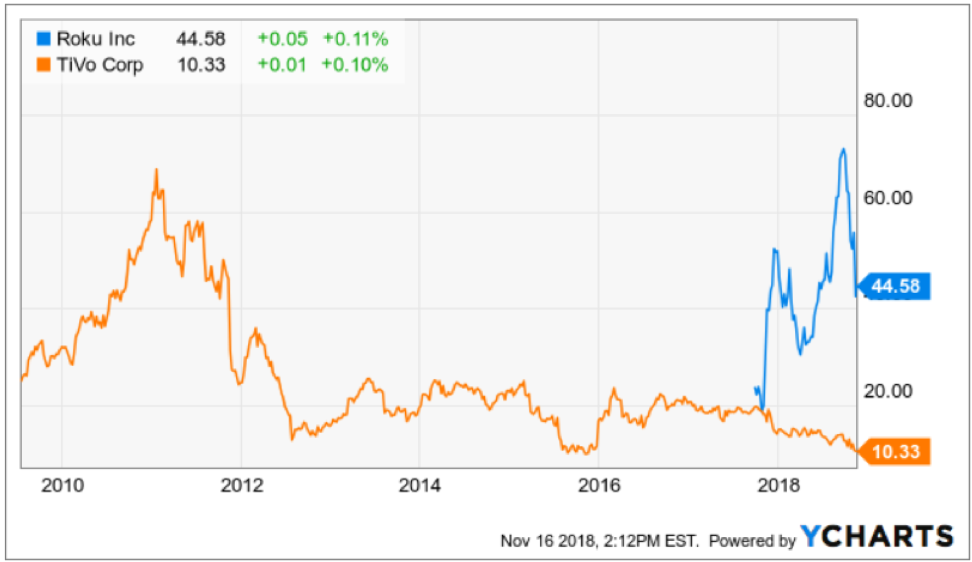
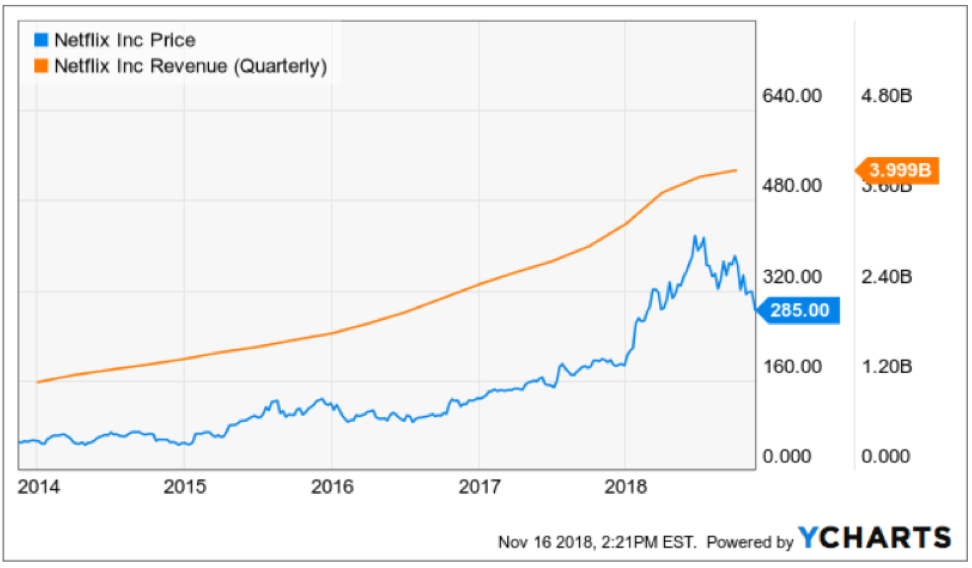

Legal Disclaimer
There is a very high degree of risk involved in trading. Past results are not indicative of future returns. MadHedgeFundTrader.com and all individuals affiliated with this site assume no responsibilities for your trading and investment results. The indicators, strategies, columns, articles and all other features are for educational purposes only and should not be construed as investment advice. Information for futures trading observations are obtained from sources believed to be reliable, but we do not warrant its completeness or accuracy, or warrant any results from the use of the information. Your use of the trading observations is entirely at your own risk and it is your sole responsibility to evaluate the accuracy, completeness and usefulness of the information. You must assess the risk of any trade with your broker and make your own independent decisions regarding any securities mentioned herein. Affiliates of MadHedgeFundTrader.com may have a position or effect transactions in the securities described herein (or options thereon) and/or otherwise employ trading strategies that may be consistent or inconsistent with the provided strategies.
This site uses cookies. By continuing to browse the site, you are agreeing to our use of cookies.
OKLearn moreWe may request cookies to be set on your device. We use cookies to let us know when you visit our websites, how you interact with us, to enrich your user experience, and to customize your relationship with our website.
Click on the different category headings to find out more. You can also change some of your preferences. Note that blocking some types of cookies may impact your experience on our websites and the services we are able to offer.
These cookies are strictly necessary to provide you with services available through our website and to use some of its features.
Because these cookies are strictly necessary to deliver the website, refuseing them will have impact how our site functions. You always can block or delete cookies by changing your browser settings and force blocking all cookies on this website. But this will always prompt you to accept/refuse cookies when revisiting our site.
We fully respect if you want to refuse cookies but to avoid asking you again and again kindly allow us to store a cookie for that. You are free to opt out any time or opt in for other cookies to get a better experience. If you refuse cookies we will remove all set cookies in our domain.
We provide you with a list of stored cookies on your computer in our domain so you can check what we stored. Due to security reasons we are not able to show or modify cookies from other domains. You can check these in your browser security settings.
These cookies collect information that is used either in aggregate form to help us understand how our website is being used or how effective our marketing campaigns are, or to help us customize our website and application for you in order to enhance your experience.
If you do not want that we track your visist to our site you can disable tracking in your browser here:
We also use different external services like Google Webfonts, Google Maps, and external Video providers. Since these providers may collect personal data like your IP address we allow you to block them here. Please be aware that this might heavily reduce the functionality and appearance of our site. Changes will take effect once you reload the page.
Google Webfont Settings:
Google Map Settings:
Vimeo and Youtube video embeds:
